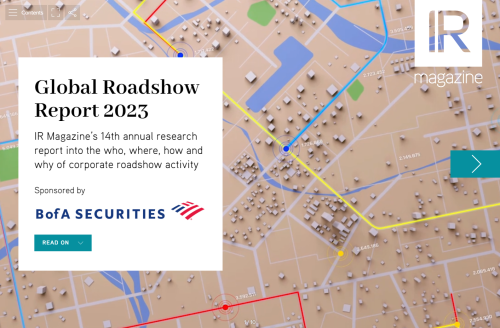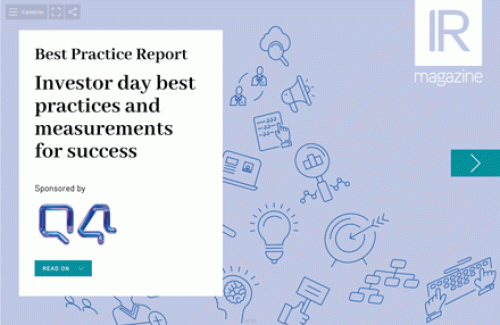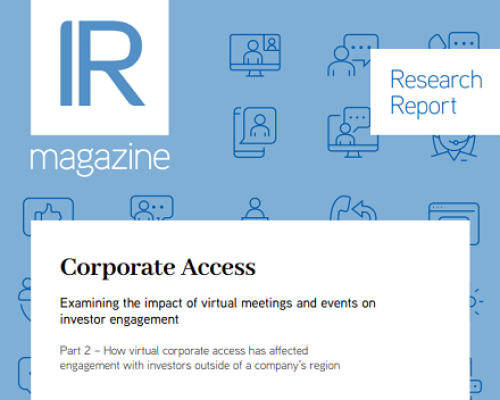When accommodation at the hotel for the forthcoming Stifel Conference in Florida this June sold out in April, the IR community knew it was well and truly back on the road. ‘People are excited to attend conferences and talk to each other,’ says Patrick Davidson, senior vice president of IR at Oshkosh Corporation. ‘So we had to find another hotel – but that’s a good problem to have because we’re getting out and meeting people. We went to our first in-person conferences earlier this year, also in Florida, which is nice and warm at that time of year. It feels good to get back to face-to-face meetings.’
‘People are excited to attend conferences and talk to each other,’ says Patrick Davidson, senior vice president of IR at Oshkosh Corporation. ‘So we had to find another hotel – but that’s a good problem to have because we’re getting out and meeting people. We went to our first in-person conferences earlier this year, also in Florida, which is nice and warm at that time of year. It feels good to get back to face-to-face meetings.’
While many IR practitioners are more than glad to be back talking to familiar faces at investor conferences and roadshows, Covid-19 has changed investor relations forever.
Before the pandemic, virtual shareholder meetings such as AGMs were banned in many jurisdictions or tightly regulated. Now, firms are choosing the right meeting format for their circumstances, with many landing on a hybrid model, a mix between broadcast and face-to-face events.
Seeing the whites of their eyes
Naz Sarkar, Computershare’s global chief executive for issuer services, says that in the UK, companies in the FTSE 100 have largely shifted to hybrid shareholder meetings.
‘But the majority of companies outside the FTSE 100, including those listed on AIM, are holding in-person meetings,’ he points out. ‘UK companies have continued the pandemic practice of letting shareholders ask pre-submitted questions before shareholder meetings for planning purposes.’
In the US, larger companies have also switched to virtual meetings. ‘Many of our US clients found online AGMs created opportunities to engage investors more effectively, particularly those with a geographically diverse shareholder base,’ Sarkar adds.
Overall, however, the number of US client-hosted virtual AGMs is expected to drop during 2022 as traditional, in-person AGMs stage a renaissance. The smaller the shareholder base, the more likely the company is to go back to face-to-face meetings.
Sarkar says that during the pandemic, virtual meetings became the norm in European countries like Germany, where emergency laws enacted at the start of Covid to allow virtual meetings have been extended. In countries such as Denmark and the Netherlands, companies are moving back to in-person meetings, albeit with elements such as online voting and webcasts incorporated into events.
In the Asia-Pacific region, virtual-only meetings are not allowed in jurisdictions such as Hong Kong, though hybrid meetings are on the rise. In Australia, most company AGMs take place in October and November and it’s likely many will offer a hybrid meeting. With a sophisticated retirement savings system, this market has a large number of retail shareholders, who value having a cup of tea with the board at the annual meeting.
This is an extract of an article that was published in the Summer 2022 issue of IR Magazine. Click here to read the full article.










